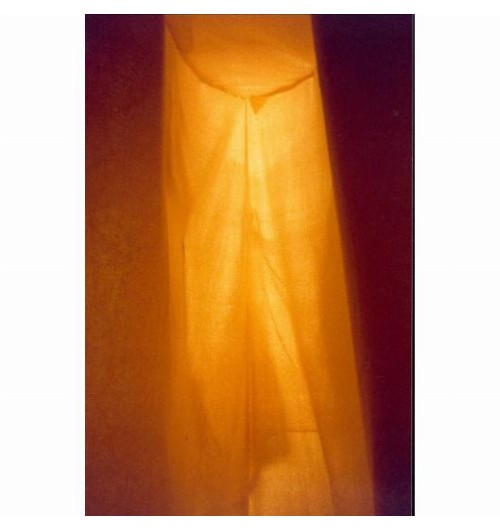The Box Room
A collaborative artwork by Sarah Nicholson and Stas Krakiewicz.
Both Sarah Nicholson and Stas Krakiewicz make artworks concerned with the nature and social context of the Fairy Tale. They had recently become parents to Anna Katarzyna (the Fairy Tale ending – or beginning) and now wish to chart some part of this experience, through from the privacy of their relationship, into the public arena of the exhibition space.
Together the Artists drew upon a book of Polish Fairy Tales to generate an artwork of sound and light, a joining of components and perspectives that will create a whole, an experience that is completed by the presence of individual viewers.
Krakiewicz’s work often reflects themes of displacement and the potential ambiguity of the message of the Fairy Tale. He uses the narrative that is part of his Polish heritage to explore the position of a second-generation migrant to this country – naturalised yet still alien. Krakiewicz has worked successfully with many diverse media, although his usual choice is paint. With this installation he will realise the ambition to re-examine sound as a found object. By abstracting from sampled sounds – processed through existing software on the Artists’ PC and a keyboard generously lent by a friend– he hopes to the evoke memory and atmosphere of childhood with the echoes of Polish Mass, Fairy Tale readings in Polish and English and the chatter of children’s toys.
Nicholson approaches the subject from a feminist perspective, considering the relation of the Fairy Tale and the Old Wives Tale to the position of women in society and the way in which their voices have been suppressed to whispers and their epistemological perspectives dismissed from the official archive. Her work takes the form of light installations and boxes, both of which appropriate and shadow the museum format. For Nicholson the cast Shadow is the intangible trace of an object. It is the untouchable, unholdable Other of a thing. It cannot be possessed or contained for future reference and yet it has the power to haunt us, to provoke in us memories unbidden, sometimes unwelcome, sometimes full of joy. Yet itself the Shadow remains as fleeting and insubstantial as childhood memories. “Sarah Nicholson’s exhibition ‘Collected Traces’ (1997) has been shown at a number of venues… She uses concepts of the human body and the historical invisibility of the concerns of women – material as all others – to show how collected traces of material activity such as writing may pose questions of accessibility and ambiguity.” Professor Susan Pearce, writing in Museum International (Vol. 51, No 2, 1999).
The work posed questions of accessibility and of knowing, of what you can know and what remains uncertain, ambiguous in the mind and to the eye, what counts as information and is therefore seen and what is discounted, and never appears in the museum collection. As Gramsci put it: “The starting point of critical evaluation is the consciousness of what one really is, and that is ‘knowing thyself’ as a product of the historical process to date, which has deposited in you an infinity of traces.”
